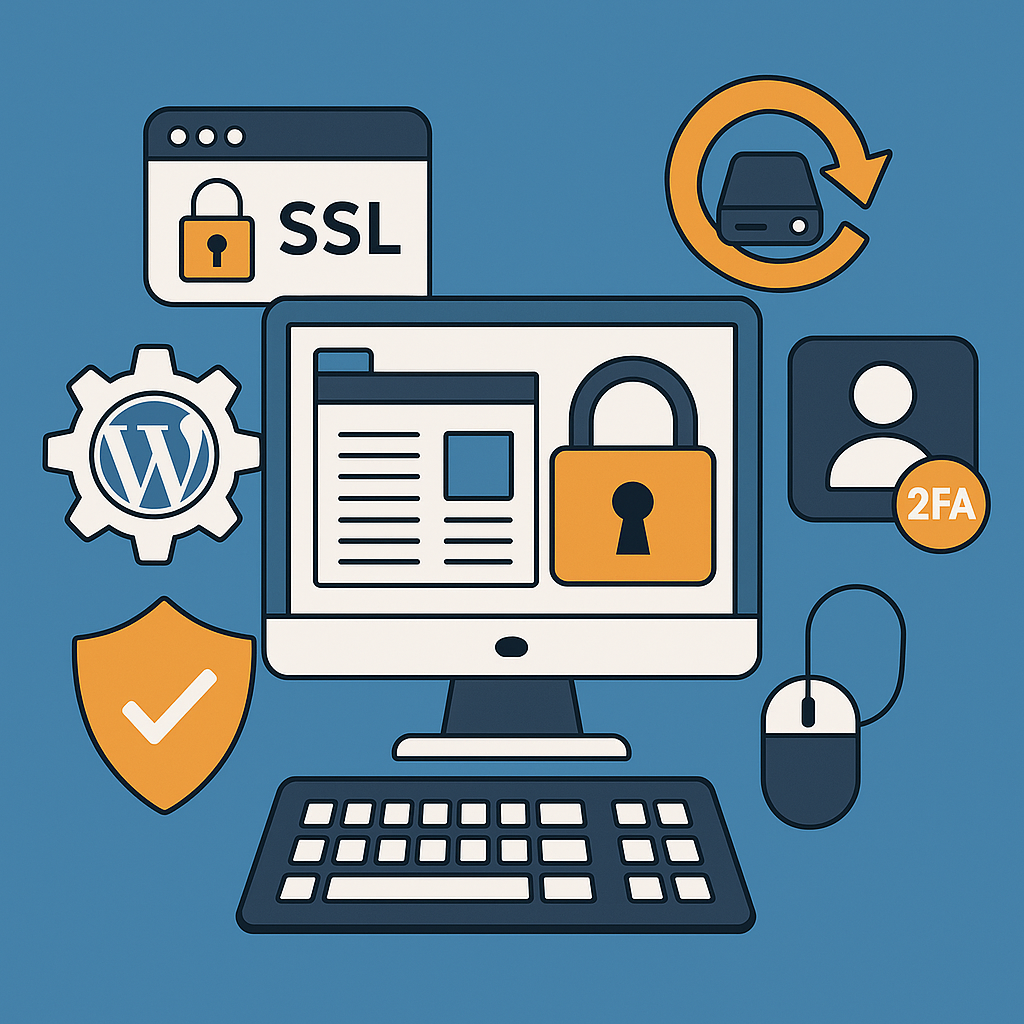
How to Build a Secure WordPress Website for Your Business or Blog
Creating a secure and professional WordPress website is essential for any business, online store, or personal blog in today’s digital landscape. With over 40% of websites built on WordPress, it’s a powerful and flexible platform. But its popularity also makes it a common target for cyberattacks. That’s why website security must be a top priority from day one.
In this guide, we’ll show you how to build a secure, fast, and user-friendly WordPress website step-by-step—perfect for beginners and small business owners alike.
✅ 1. Choose a Secure WordPress Hosting Provider
The foundation of every secure website starts with reliable hosting. Look for WordPress hosting providers that offer:
- Free SSL certificate
- Daily backups
- Malware scanning and removal
- Web application firewall (WAF)
- 24/7 security monitoring
Top secure WordPress hosts: SiteGround, Bluehost, WP Engine, and Kinsta.
✅ 2. Install a Trusted WordPress Theme
Not all WordPress themes are created equal. For performance and protection, always choose a theme from:
- WordPress.org Theme Directory
- Trusted premium providers like ThemeForest or Kadence
Your theme should be:
- Mobile-responsive
- Regularly updated
- Lightweight and SEO-optimized
Avoid nulled or pirated themes—they’re a major security risk.
✅ 3. Install Essential Security and Optimization Plugins
The right plugins enhance your WordPress website’s functionality and protection. But too many—or unreliable ones—can create vulnerabilities.
Must-have plugins for WordPress security:
- Wordfence or Sucuri (Firewall & malware protection)
- UpdraftPlus (Automated backups)
- Limit Login Attempts Reloaded (Prevent brute force attacks)
- W3 Total Cache or WP Rocket (Speed and performance)
✅ 4. Enable HTTPS and SSL Encryption
An SSL certificate encrypts user data and builds trust. Most hosts offer free SSL via Let’s Encrypt. After installation:
- Go to Settings > General and update your WordPress URL to HTTPS
- Install the Really Simple SSL plugin for automatic redirection
Your secure WordPress website will now display a padlock icon in browsers.
✅ 5. Use Strong Admin Credentials and Enable 2FA
Avoid default usernames like "admin" and use strong, unique passwords. For better protection:
- Enable two-factor authentication (2FA)
- Install the WP 2FA plugin
- Use a password manager to store your credentials securely
✅ 6. Keep WordPress Core, Plugins, and Themes Updated
Outdated plugins and themes are top reasons WordPress sites get hacked. Set up automatic updates or check manually every week. Delete unused plugins and themes to reduce risk.
✅ 7. Backup Your Site Regularly
Backing up your website ensures you can recover from any attack or crash. Use:
- UpdraftPlus
- BackupBuddy
- Your hosting provider’s backup tools
Schedule daily or weekly backups and store them in the cloud (e.g., Google Drive, Dropbox).
✅ 8. Install a Complete WordPress Security Plugin
A full-featured security plugin provides:
- Real-time firewall protection
- Login activity tracking
- File change monitoring
- Malware scanning
Top security plugins: Wordfence, Sucuri, iThemes Security
🔒 Conclusion: Build a Safe and Reliable WordPress Website
A secure WordPress site protects your brand, users, and business reputation. By following these best practices—choosing secure hosting, installing trusted plugins, and enabling encryption—you can create a WordPress website that’s fast, secure, and SEO-friendly.
Need help launching or securing your WordPress website? Contact our expert team today for custom WordPress development and security optimization.
✅ Build a fast, secure WordPress website with The BlueGem today!
— Gemma (5 June 2025)